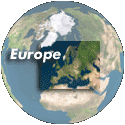
Crich Tramway Village
Crich, Derbyshire, England, UK
September 24th 2006 - 12:56 GMT
© 2006 Steve Pendleton, All Rights Reserved.
This is a very special panorama for me and I dedicate it to the memory of my Mother who passed away on the morning of the 23rd, the day that I had originally planned on shooting it.
She was incredibly brave during her 18 month long fight against cancer, often in a lot of pain yet always keen to see any new panoramas I had completed, I know for certain that she would have wanted me to participate again this time.
After many years Trams have recently made a return to my home city of Nottingham. Crich Tramway Village is only a short drive from where I live yet I had never visited it before, so when the theme for this shoot was announced I knew straight away that this would be my subject.
Nestling high up in the heart of Derbyshire, Crich Tramway Village is a lovingly restored period village that is also home to the National Tramway Museum and its world renowned archives.
Trams run to and fro every few minutes as visitors ride over the cobbles of a recreated period street, past the original facades of historic buildings from around the country before heading up the valley to views over the famous Derwent Valley. Hand over the old penny you are given on entry and you are free to ride the trams all day.
This fascinating Museum began during the decline of the tram in the 1950's. Still very much volunteer-based, this 'Museum on the Move' depends almost entirely on its members. Founder members became 'people with a mission' to rescue, store and restore as many types of tram as possible. The National Tramway Museum has developed into a major tourist attraction on the world stage, and is an important research centre for historians, scholars and students.
4 shots around at 90 degrees plus zenith with a handheld nadir image.
Stitched on a PowerMac G5 with PTGui v6, output to blended and layered Photoshop file. Cube faces created with CubicConverter, bottom face extracted and nadir patched in Photoshop. Final QTVR output from CubicConverter.


 Tap or click the zoom icon in the bottom right corner of the picture to switch between in-page and fullscreen view
Tap or click the zoom icon in the bottom right corner of the picture to switch between in-page and fullscreen view